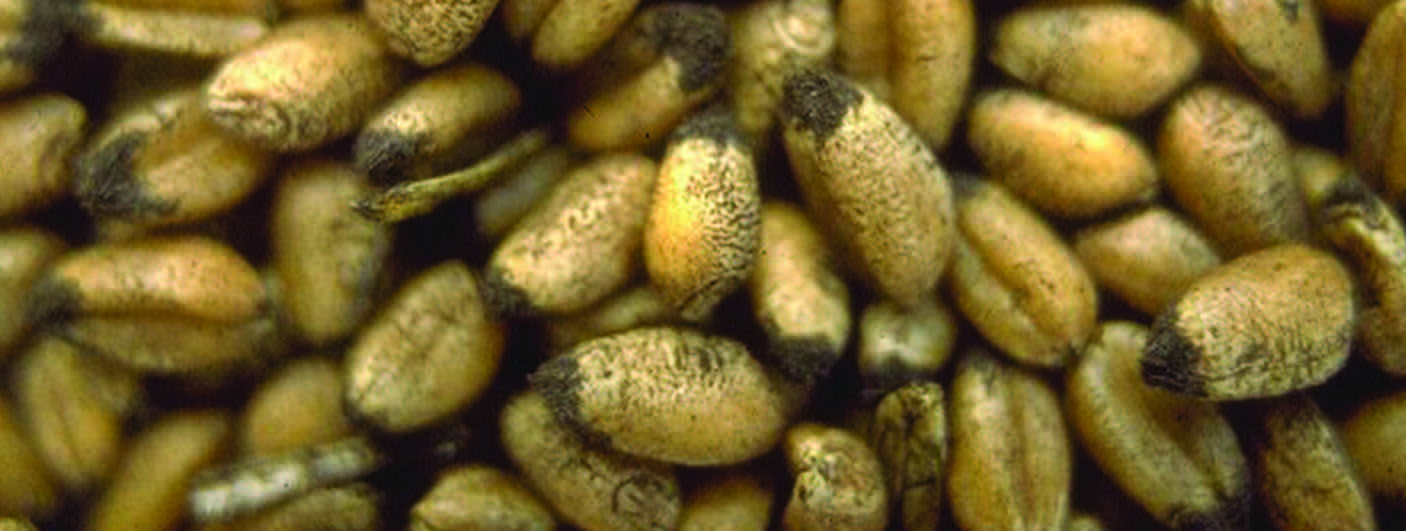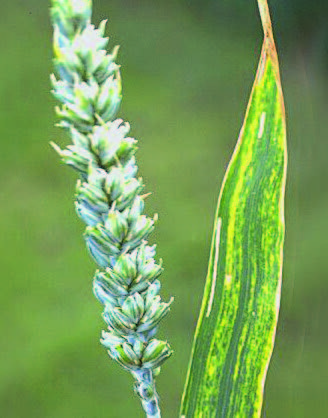- Home
- Knowledge library
- Management of bunt (stinking smut) disease in wheat
Management of bunt (stinking smut) disease in wheat
As each bunt ball contains millions of spores, the capacity for contamination of healthy grain in the same field is enormous. Management of this wheat disease often requires good hygiene and fungicide-treated seed.
Cereal disease management homepage
Differences between dwarf bunt and bunt diseases in cereals
Bunt symptoms in wheat
Bunt symptoms show after ear emergence. Flag leaves show yellow streaks and plants can become stunted, with squat, dark grey-green ears and slightly gaping glumes. In infected ears, grain is replaced by seed-like 'bunt balls', each containing millions of greasy, black, foul-smelling spores. In severe cases, the whole field may smell of rotting fish. In wet conditions, a black ink-like substance may cover the ears. This occurs when released spores run out of the protective glumes onto the ear and stem.
The disease can lead to unsaleable grain, because of discolouring and smell.
Note: Also called stinking smut.
Bunt life cycle
The pathogen that causes bunt (Tilletia tritici) only infects wheat.
The spores on the seed surface germinate along with the seed. Each produces a short fungal thread, terminating in a cluster of elongated cells. These produce secondary spores that infect the coleoptiles of the young seedlings before the emergence of the first true leaves. The mycelium grows internally within the shoot, eventually infecting the developing ear. Affected plants develop apparently normally until the ear emerges, when bunt balls replace grain sites.
In damp soil, spores usually germinate and then, in the absence of the host plant, die. However, in dry seasons, they may survive in the soil (especially if they are protected within the glumes of shed ears) from the harvesting of one crop to the sowing of the next. Wind-blown spores, particularly from late-harvested crops, can contaminate neighbouring fields. Soilborne spores can invade seedlings very early in germination.
.JPG) AHDB
AHDB
Management of bunt
Seed-treatment options
If seed is continually saved and re-sown without treatment the disease can build up very rapidly. Cases usually arise from sowing untreated farm-saved seed.
Test seed, with a wash or molecular test (both take 48 hours). The former is quicker and cheaper.
Treat infected seed, if infection is greater than one spore per seed.
Note: Crops that emerge slowly are at elevated risk.
Seed treatment options for wheat
Crop, machinery and storage hygiene
Harvesting or handling equipment contaminated by spores can introduce the pathogen into seed lots harvested in following seasons.
Good hygiene during harvest, storage, and transport will reduce the chance of the disease spreading to healthy grain.
Delaying drilling of a second wheat crop, after harvesting an infected wheat crop, also reduces infection risk. This is because any wet spell causes the soilborne bunt balls to germinate before they can infect the following crop.

In infected wheat ears, the grain is replaced by seed-like ‘bunt balls’

Wheat flag leaf showing typical yellow streak symptoms caused by bunt
 AHDB
AHDB
Cereal disease management
Visit our main page for disease management in this crop
Topics:
Sectors:
Tags:

